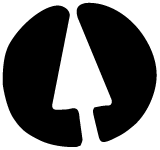Order Richard Chartier “Removed” in the TouchShop
CD+DL Limited Edition, Embossed sleeve
Released May 2017
Tracklisting:
1. Removed 1 – You can hear an extract here
2. Removed 2
In 2000, The Wire wrote of Chartier’s work: “it’s worth stretching the ears in search of Chartier’s sequences of exquisitely sculpted sonic events, as gorgeous detail bodies forth out of the shadows”… the same holds true today.
Formed over the course of 5 years, Removed was a process of removal/erasure.
Only trace elements appear from what was. Their interactions merely a ghost of a composition — subtle echoes across the sound spectrum. A glacially paced progression of discreet relational sonic events and flows.
Inspired in part by the rigorous line drawings of American visual artist Linn Meyers, whose 2011 untitled drawing graces the cover, Removed draws the listener in to follow patterns. Meyers often creates large scale on-site works that transform a space into durational installations of seemingly endless lines. Seen from a distance these lines appear as almost natural ripples in a wall surface, but deeper, upon closer inspection, the delicate echoes and fluctuations of the artist’s hand arise from the density of details.
Chartier’s precise sound compositions work in a similar manner. Austere and shimmering, the two compositions of Removed beg for careful listening on headphones. Or let these 2 compositions play quietly amplified across your space. Either way, a physically captivating dimensional experience.
Removed is a continuing reflection on major aesthetic elements of Chartier’s artistic language as it has evolved through the years. This is Chartier’s first new solo studio album since 2013’s field recording exploration Interior Field and 2012’s purely digital Recurrence, both released on LINE, US.
Biography:
Richard Chartier (American, b.1971) is a Los Angeles based artist and is considered one of the key figures in the current of reductionist sound known as both “microsound” and Neo-Modernist. Chartier’s minimalist digital work explores the inter-relationships between the spatial nature of sound, silence, focus, perception and the act of listening itself.
Chartier’s critically acclaimed sound works have been published since 1998 on a variety of labels internationally. He has collaborated with noted composer William Basinski, sound artists ELEH, CoH, Robert Curgenven, Taylor Deupree, AGF, Yann Novak, and German electronic music pioneer Asmus Tietchens. In installation form, he has created works with multimedia artists Evelina Domnitch and Dmitry Gelfand, visual artist Linn Meyers, and projected light artist Anthony McCall.
Chartier’s sound works/installations have been presented in galleries and museums internationally and he has performed his work live across Europe, Japan, Australia, and North America at digital art/electronic music festivals and exhibits. In 2000 he formed the recording label LINE and has since curated its continuing documentation of compositional and installation work by international sound artists/composers exploring the aesthetics of contemporary and digital minimalism.
Reviews:
Boomkat (UK):
Excellent, Barely-there micro-minimalism “In 2000, The Wire wrote of Chartier’s work: it’s worth stretching the ears in search of Chartier’s sequences of exquisitely sculpted sonic events, as gorgeous detail bodies forth out of the shadows…; the same holds true today. Formed over the course of 5 years, Removed was a process of removal/erasure. Only trace elements appear from what was. Their interactions merely a ghost of a composition – subtle echoes across the sound spectrum. A glacially paced progression of discreet relational sonic events and flows. Inspired in part by the rigorous line drawings of American visual artist Linn Meyers, whose 2011 untitled drawing graces the cover, Removed draws the listener in to follow patterns. Meyers often creates large scale on-site works that transform a space into durational installations of seemingly endless lines. Seen from a distance these lines appear as almost natural ripples in a wall surface, but deeper, upon closer inspection, the delicate echoes and fluctuations of the artist’s hand arise from the density of details. Chartier’s precise sound compositions work in a similar manner. Austere and shimmering, the two compositions of Removed beg for careful listening on headphones. Or let these 2 compositions play quietly amplified across your space. Either way, a physically captivating dimensional experience. Removed is a continuing reflection on major aesthetic elements of Chartier’s artistic language as it has evolved through the years. This is Chartier’s first new solo studio album since 2013’s field recording exploration Interior Field and 2012’s purely digital Recurrence, both released on LINE, US.
ambientblog (net):
It has almost become a genre in itself: reductionist minimalism, exploring deterioration (think Basinski), or exploring the artefacts of multiple digital copies (think Alva Noto).
Or: exploring what is remains after removing important details – think Richard Chartier‘s latest album (his first new studio album under his own name since 2013).
It’s a famous Miles Davis quote: “Don’t play what’s there, play what’s not there.”
Which is exactly what Richard Chartier does here on this album.
It took a five-year process of removal/erasure to form these two pieces (26 and 23 minutes).
“Only trace elements appear from what was”.
Only Chartier himself can probably tell what ‘was’ and what has been removed. But the result is a fascinating ‘ghost of a composition’ which presents a sonic universe in itself. An infinite and timeless universe.
Two ways of listening are recommended: you can play it quietly amplified across your space, changing the atmosphere of your surroundings in the truest sense of ‘ambient music’.
Or, listen carefully on your headphones (be sure to listen on a decent system and using a lossless audio source) to hear all the captivating details of this ‘glacially paced progression of discreet relational sonic events and flows.’
I recommend doing both, though not at the same time.

